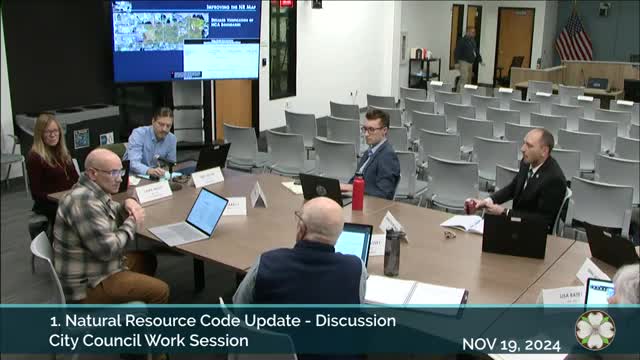Mapping Controversy Sparks Debate Over Wetland Regulations
November 20, 2024 | Milwaukie, Clackamas County, Oregon
This article was created by AI summarizing key points discussed. AI makes mistakes, so for full details and context, please refer to the video of the full meeting. Please report any errors so we can fix them. Report an error »

In a recent government meeting, officials discussed the need for updated mapping and regulation of natural resources, particularly focusing on stormwater facilities and their classification as wetlands. The conversation highlighted the importance of utilizing advanced technologies, such as LIDAR, to accurately assess land features and improve environmental protection efforts.
One key topic was the classification of a stormwater ditch near a residential care facility on Stanley Street. Initially marked with a 50-foot buffer as a natural stream, further investigation revealed it was part of the city's stormwater system. This prompted a reassessment, leading to a reduction of the buffer to 15 feet after determining it qualified as a secondary protected water feature due to its limited drainage area.
Officials also examined other stormwater facilities, such as the Willow Place natural area and a new facility near Oak Railroad, which are currently not classified as wetlands despite their potential habitat value. The meeting underscored the need for clarity in regulations distinguishing between engineered stormwater features and natural wetlands, as this affects land use and development opportunities for adjacent properties.
The discussion emphasized the necessity of collaboration between natural resource teams and public works to navigate these regulatory challenges effectively. As the city looks to refine its maps and regulations, officials expressed a commitment to protecting natural resources while accommodating future development. The meeting concluded with a recognition of the complexities involved in balancing environmental protection with urban planning needs.
One key topic was the classification of a stormwater ditch near a residential care facility on Stanley Street. Initially marked with a 50-foot buffer as a natural stream, further investigation revealed it was part of the city's stormwater system. This prompted a reassessment, leading to a reduction of the buffer to 15 feet after determining it qualified as a secondary protected water feature due to its limited drainage area.
Officials also examined other stormwater facilities, such as the Willow Place natural area and a new facility near Oak Railroad, which are currently not classified as wetlands despite their potential habitat value. The meeting underscored the need for clarity in regulations distinguishing between engineered stormwater features and natural wetlands, as this affects land use and development opportunities for adjacent properties.
The discussion emphasized the necessity of collaboration between natural resource teams and public works to navigate these regulatory challenges effectively. As the city looks to refine its maps and regulations, officials expressed a commitment to protecting natural resources while accommodating future development. The meeting concluded with a recognition of the complexities involved in balancing environmental protection with urban planning needs.
View full meeting
This article is based on a recent meeting—watch the full video and explore the complete transcript for deeper insights into the discussion.
View full meeting
